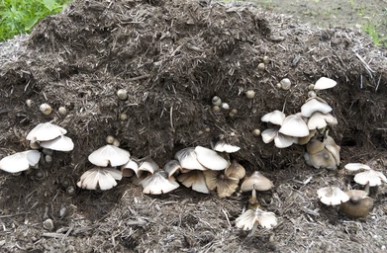Mushroom compost are not only beneficial feed and fertilizer but also a potential bioremediation material for environmental pollution. It has been demonstrated that mushroom compost can be used for the remediation of various degraded soils, such as heavy metal-contaminated soils and organic-contaminated soils. In recent years, mycorrhizal compost has attracted scientists' attention as an ecological remediation material. Organic pollutants biodegrade through the microbial mechanisms in the residue, including all the fungi, bacteria, and enzymes in the residue.
Lifeasible provides research services for mushroom compost use in ecological remediation. By analyzing the improvement of contaminated soil with mushroom compost, we can provide a theoretical and technical reference to solve the problem of environmental pollution with mushroom compost.

Restoration Mechanism
Soil biological matter can bind to soil organic pollutants (e.g., PAEs, PCBs, pesticides, herbicides.) through various mechanisms such as ion exchange and protonation, hydrogen bonding, van der Waals forces, ligand exchange, cation, and water bridges, forming large or highly polar molecules that are difficult to penetrate into the cell membranes of organisms, thus reducing the toxicity of organic pollutants. The soluble components of humic substances, humic acid (HA) and fulvic acid (FA), are complex in composition and contain a large number of phenolic hydroxyl and carboxyl groups in their structure, which play an important role in the removal of organic pollutants and heavy metal hazards.
Our Services
Lifeasible develops the role of mushroom compost in ecological restoration. By exploring mushroom compost remediation capabilities, we hope for the full utilization of the resource. We provide specialist solutions. These services include but are not limited to the following:
- Soil Heavy Metal Assessment
We investigate the effect of mushroom residues on copper and chromium heavy metal forms in soils grown with different crops in polluted and irrigated areas. This is to provide a theoretical reference for mushroom residues to improve heavy metal contamination in soils.
- Assessment of Heavy Metals in Wastewater
Using slag's adsorption properties, we can investigate the pH of the effluent, the initial concentration of heavy metals, and the amount of adsorbent used. We can also assess whether the mass concentrations of Pb+ and Zn+ in the treated effluent are close to the combined effluent discharge standards.
- Investigating Pollutant Removal Effectiveness
We add an appropriate amount of bacterial residue to the soil under investigation to assess its ability to degrade organic contaminants.
- Conducting Soil Remediation Trials
We conduct soil remediation experiments on organically contaminated soils using toluene, nitrobenzene, and naphthalene as model contaminants. We are investigating the ability of residues to degrade organic contaminants.
Contact Us
Lifeasible is constantly exploring the maximum potential of fungi in eco-remediation materials application. If you are interested in our services, please contact us for a more detailed description of our services.
For research or industrial raw materials, not for personal medical use!



